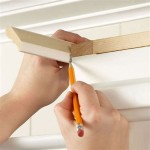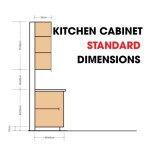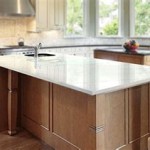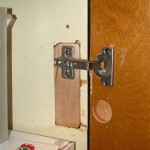Can You Remove Built-In Cabinets?
Built-in cabinets are a great way to maximize storage space and enhance the functionality of a room. However, there may come a time when you need to remove them, whether for renovation, remodeling, or simply to create a new layout.
Factors to Consider
Before embarking on the task of removing built-in cabinets, it's essential to consider the following factors:
- Construction Method: How the cabinets were built and installed will influence the difficulty of removal. Cabinets that are screwed or nailed into place are easier to remove than those that are glued or welded.
- Wall Structure: The type of wall the cabinets are attached to will affect the removal process. Drywall can be easily patched after cabinet removal, while plaster or brick walls may require more extensive repairs.
- Electrical and Plumbing: If the cabinets house any electrical appliances or plumbing fixtures, these must be disconnected and relocated before removal.
- Accessibility: Ensure you have adequate space and tools to access and remove the cabinets safely.
Tools and Equipment Required
To remove built-in cabinets, you will need the following tools and equipment:
- Screwdriver or drill
- Crowbar
- Hammer
- Pry bar
- Safety glasses
- Work gloves
Step-by-Step Removal Process
Once you have considered the factors and gathered the necessary tools, follow these steps to remove built-in cabinets:
- Safety First: Wear safety glasses and gloves throughout the process.
- Remove Doors and Drawers: Start by removing any doors or drawers attached to the cabinets.
- Disconnect Utilities: If applicable, disconnect any electrical or plumbing fixtures from the cabinets.
- Unscrew or Remove Fasteners: Locate and remove all screws, nails, or bolts that are holding the cabinets in place.
- Pry Loose: Once the fasteners are removed, carefully pry the cabinets away from the wall using a crowbar or pry bar.
- Remove from Wall: Gently lift and remove the cabinets from the wall, being mindful not to damage the wall surface.
- Repair Wall: If necessary, patch any holes or damage left on the wall after cabinet removal.
Tips for Success
To ensure a successful cabinet removal process, consider these tips:
- Don't rush the process, as removing built-in cabinets can be time-consuming.
- Avoid using excessive force, as this could damage the cabinets or the wall.
- If you encounter any unexpected obstacles, consult with a professional contractor for assistance.
- Plan ahead for cabinet disposal, as they may not fit in your regular trash containers.
Conclusion
Removing built-in cabinets requires careful planning and execution. By considering the factors, gathering the necessary tools, and following the step-by-step process outlined above, you can successfully remove these cabinets and create a new space for your needs.
Remember, if you are unsure about any aspect of the removal process, do not hesitate to seek professional help to ensure a safe and effective outcome.

How To Remove And Repair Drywall Built Ins First Home Love Life

How Can I Build Tall Pantry Cabinets Hometalk

More Like Home How To Turn Stock Cabinets Into Diy Built In S

Raised Kitchen Cabinet Makeover Sawdust 2 Stitches

How To Remove Kitchen Cabinets A Diy Guide Dumpsters Com

How To Remove And Repair Drywall Built Ins First Home Love Life

How To Tear Apart Built In Furniture

How To Remove And Install Kitchen Cabinets

Diy Built In Cabinets Using Prefab Step By Tutorial

How To Extend Kitchen Cabinets Up The Ceiling Thrifty Decor Diy And Organizing
Related Posts








